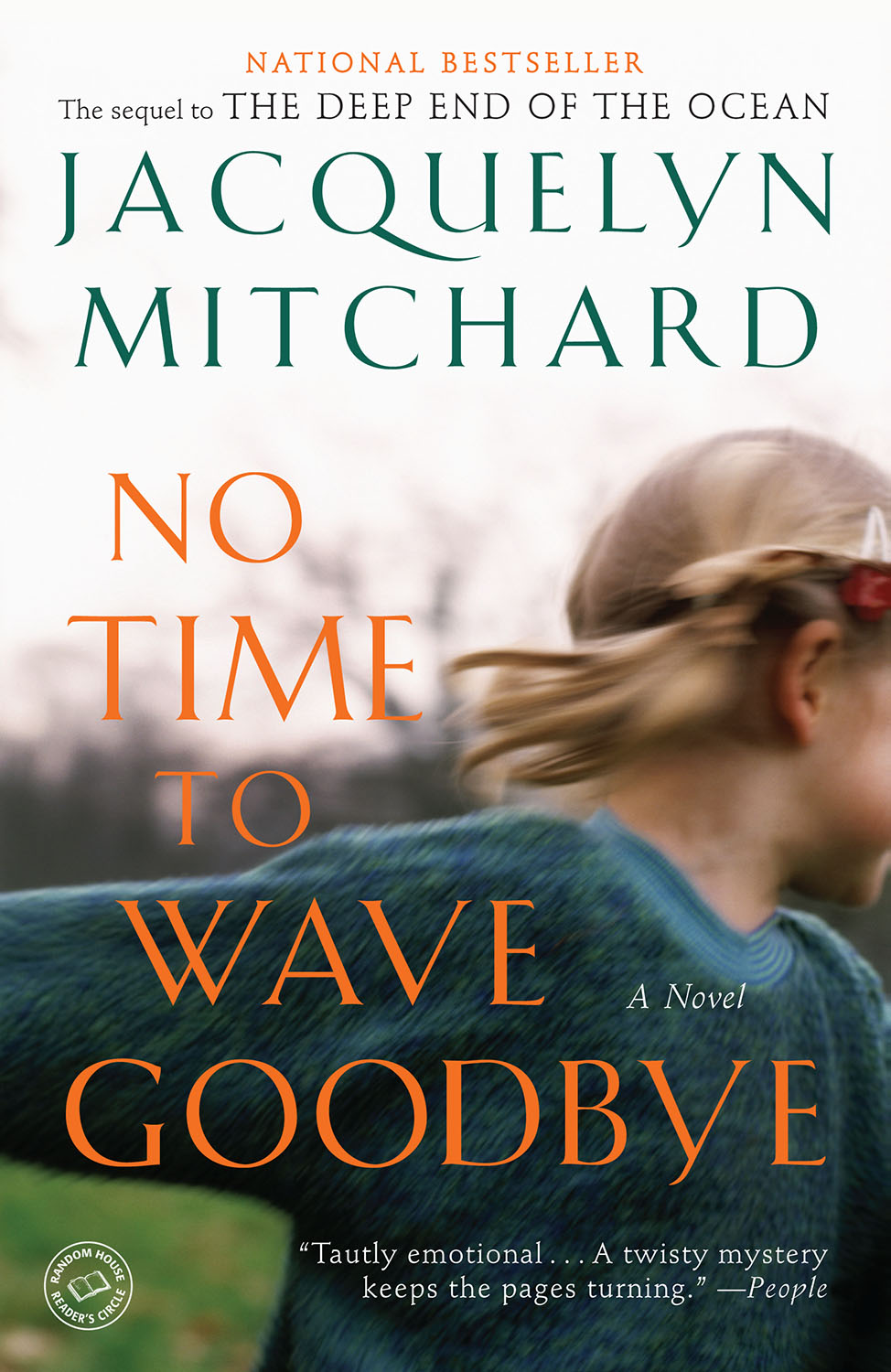No Time To Wave Goodbye

Overview
It seems like an easy choice, marketing-wise.
Why not write a sequel to my most successful novel—The Deep End of the Ocean? A follow-up to the first Oprah Winfrey Book Club book! Guaranteed readership, right? Wheeee!
In fact, I fought this decision even after my agent and my editor endorsed my idea as a book that could stand on its own. I loved my story. But I was wary. “Real authors,” except those gifted with a complex continuing character, don’t write sequels, thirteen years later. And I didn’t know if I could actually write about the Cappadoras, thirteen years after I created them.
So slowly, and haltingly, I began.
I feathered in the story in the first book – but didn’t re-tell it. The point was not the kidnapping and remarkable recovery of three-year-old Ben Cappadora, who came home, nine years later, to a family he didn’t remember. This was about the mother of both sons and the boy who truly was lost—Vincent, who let go of his brother’s hand. The first book closed with the family in an uneasy peace.
I thought I could leave them that way.
It’s true, whenever I gave a reading or taught a class or spoke on a panel, people asked me, “What happened to Beth and Pat? What happened to Vincent?”
And suddenly, in the midst of working on another book, I knew. I knew the story that would become No Time to Wave Goodbye, the book I hope you’re now holding in your hands. It was the most natural thing in the world.
The Cappadoras were part of my molecules.
Although I delight in researching something new—what my friend Karin Slaughter calls “what I know and what I want to know”—there was a special confidence and joy in going back, after a long time away. I returned to who I was and who I am – to the rhythms my west-side Chicago upbringing, the shouts of men and women hailing each other from their concrete stoops as the street lights came on, my father’s piercing whistle telling us to come in, baseball games that started in June and the score was 300 to 276 when school started. I heard the boys in brown leather jackets who sang doo-wop on summer nights even in the 1970s, the fathers in strappy t-shirts mowing the lawn, the church bells, the roar and clatter of the train bound for the Loop,. I smelled the wine and sugar in the gravy and the cordite of fireworks that weren’t illegal then. I felt my godmother Serafina’s soft hands as she measured me for a dress. There was a comfort in writing about big Italian men in handmade suits who would not think twice about giving the diamond on their pinkie rings to a friend – or about breaking the fingers of an enemy – about seeing altar boys rush into church in baseball cleats and the Christmas party at the Moose Lodge. The police. When a big truck crossed over the huge concrete bridge, just a hundred yards away, my bedroom windows rattled; my music box played a single note. My mother’s roses in their wooden boxes on the tar terrace outside our apartment. Her cologne … My Sin.
I grew up with the Cappadoras.
They are almost an alter-me.
I knew what could happen to the Cappadoras, so long and intimately in the public eye, reluctantly placed in that position again. I knew how they would react. I spent the next nine months with them in grateful struggle.
When I was finished, I had a book that made me happy. I had gone back to that place—those sounds and sights and voices—again, in No Time to Wave Goodbye.
I hope you’ll be happy you went back with me.
Read More